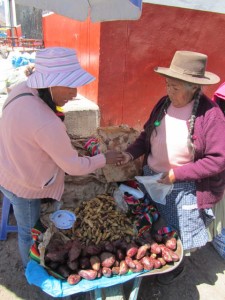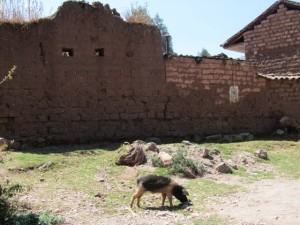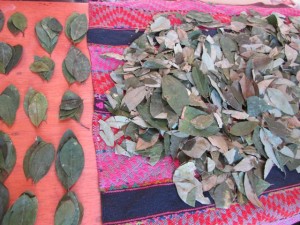Into the Sacred Valley
continued from “The Shaman”
Standing outside the Cuzco airport, I heard someone call my name. I turned around to find a young man with long, black hair. He was dressed in white, his pants a soft wool, held up by a colorful woven sash. He introduced himself as José and said that Doris was waiting for us at home—in the Sacred Valley.
He motioned for a taxi and we got inside. José explained that we would go into town and look for a ride to take us north. We were dropped off on a bustling street, in a typical working class neighborhood, with run-down buildings and vendors hawking everything from windshield wipers to plastic bowls. It could have easily been Mexico, except for the distinct accent on everyone’s lips.
José left me on the corner while he looked for transportation. Even though it was winter in the Andes, the afternoon sun was strong. I quickly shed my coat, wrapping it around my waist. José returned in a black sedan with another couple already inside. It was an unusual arrangement, but I didn’t question the ways of Peru, I just climbed in.
We drove through the countryside, on twisting mountain roads, as Cumbia music blared in my ears. We passed tethered goats munching on grass and women sitting outside their humble homes in full skirts and black bowler hats. Snow-covered peaks rose in the distance.
José was quiet. I was full of all the questions a normal person would have asked before getting on a plane to Peru, starting with: “Where are we going exactly?”
Doris and José lived in a small village in the middle of the Sacred Valley, home of the Inca, and one of Peru’s most prized agricultural centers. Their home was near a famous hacienda…a reminder of the Spanish conquest and a place still resented by many indigenous people.
An hour and a half later, we turned onto a rough dirt road, and headed toward the edge of a jagged mountain. There, at the base, stood the village. The driver pulled to a halt beside a crumbled wall, next to fields of cauliflower and tomatoes. José grabbed my suitcase from the trunk and hoisted it onto his shoulders. He told me to start down the narrow path in front of us, between the trees, and he would follow. I moved forward, until a pristine pig blocked my way. The men encouraged him to move with anxious shouts. I continued in the heat, my head throbbing, my stomach churning, wondering what had I gotten myself into.
The ground was covered with remnants of a heavy rain and shaded with welcoming leafy trees. I came upon a small house with a carved wooden door. An ancient sheep sat nearby, freshly washed clothes hanging above him. I hesitated, thinking we had reached our destination, but José motioned me forward. I stopped at a creek of crystal clear water and I was told to jump across. The path ended at a wrought iron gate. I pushed it open and saw a two-story house painted white with a rustic timbered staircase joining the floors. A woman with long, flowing grey hair and a majestic smile met me—Doris. Francoise was behind her, a welcome sight. I had finally arrived.
That night after many cups of coca tea to ease the high-altitude pain in my head, Doris fanned out a deck of “medicine” tarot cards and asked me to pick two. The first one would signify why I was in Peru. The second one would address my destiny and life’s work. Then she handed me a book to explain the cards and asked me to read.
My first card was the Jaguar—I needed to be open-minded and learn new ways to help myself and others. My limits would be tested, my patience tried.
My second card was the Bat—the symbol of death and rebirth of a shaman. The book talked about the symbolic death of old ways and personal identity, brutal tests of strength of body and mind, tests of humility and fortitude. It said that in Native American cultures shamans were buried alive and then resurrected the next day…reborn.
Stunned at discovering this ancient ritual, I told Doris that I had already died and been reborn. I had survived a life-threatening situation and was alive when doctors said I should be dead (see Venice: The Audition for all those sorted details.). I bragged that I had already fulfilled the destiny of the Bat. Doris laughed and shook her head. “That was only the beginning.”
“You know I sent for you,” Doris added. “I’ve been doing this for 30 years and have never asked anyone to bring a friend along at the last minute, but I knew Francoise would bring me the person I needed to work with.”
Damn! What had I stumbled upon.






